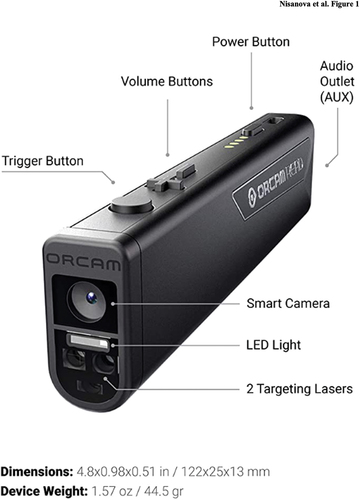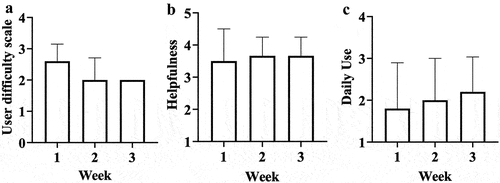Figures & data
Figure 1. OrCam read. OrCam read is a handheld, Bluetooth-connected device powered by artificial intelligence equipped with a smart camera capable of capturing printed or digital text and playing it out loud.

Table 1. Study timeline.
Table 2. Daily function tasks descriptions, instructions, and mean scores at baseline and after a 1-month intervention with OrCam read.
Table 3. Participant demographic and clinical characteristics.
Table 4. Distribution of national eye institute visual function questionnaire-25 score changes including the 10-item neuro-ophthalmic supplement by categories before and after the 1 month intervention with OrCam read.
Figure 2. Weekly telephone check-in data over a 3-week period. (a) Participants were asked how easy OrCam was to use: 1 = very easy; 2 = easy; 3 = difficult; 4 = very difficult. b) Participants were asked to rate how helpful they found the virtual support meetings/groups to be: 1 = not at all; 2 = somewhat helpful; 3 = helpful; 4 = extremely helpful. (c) Participants were asked how long they spent using OrCam daily: 1 = less than 30 minutes; 2 = 30 to 60 minutes; 3 = 1 to 2 hours; 4 = more than 2 hours.

Table 5. Satisfaction survey results after a 1 month intervention with OrCam read.
